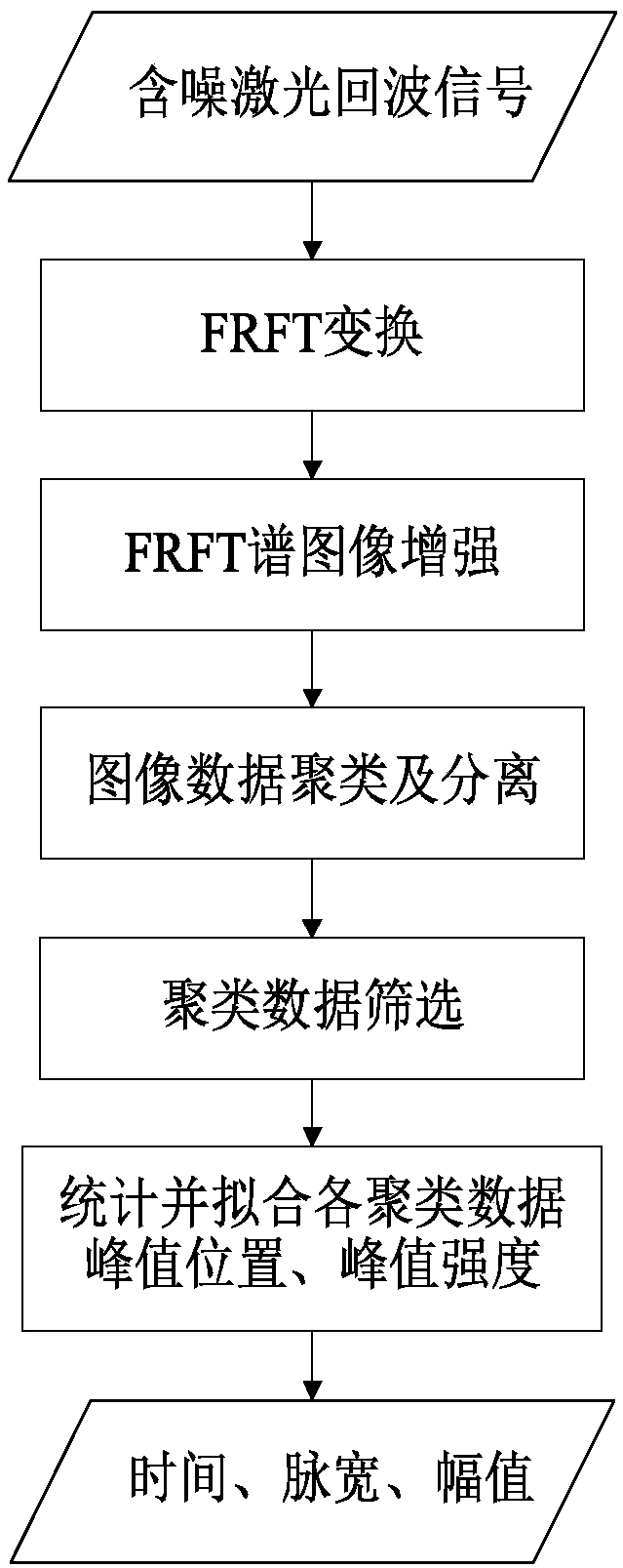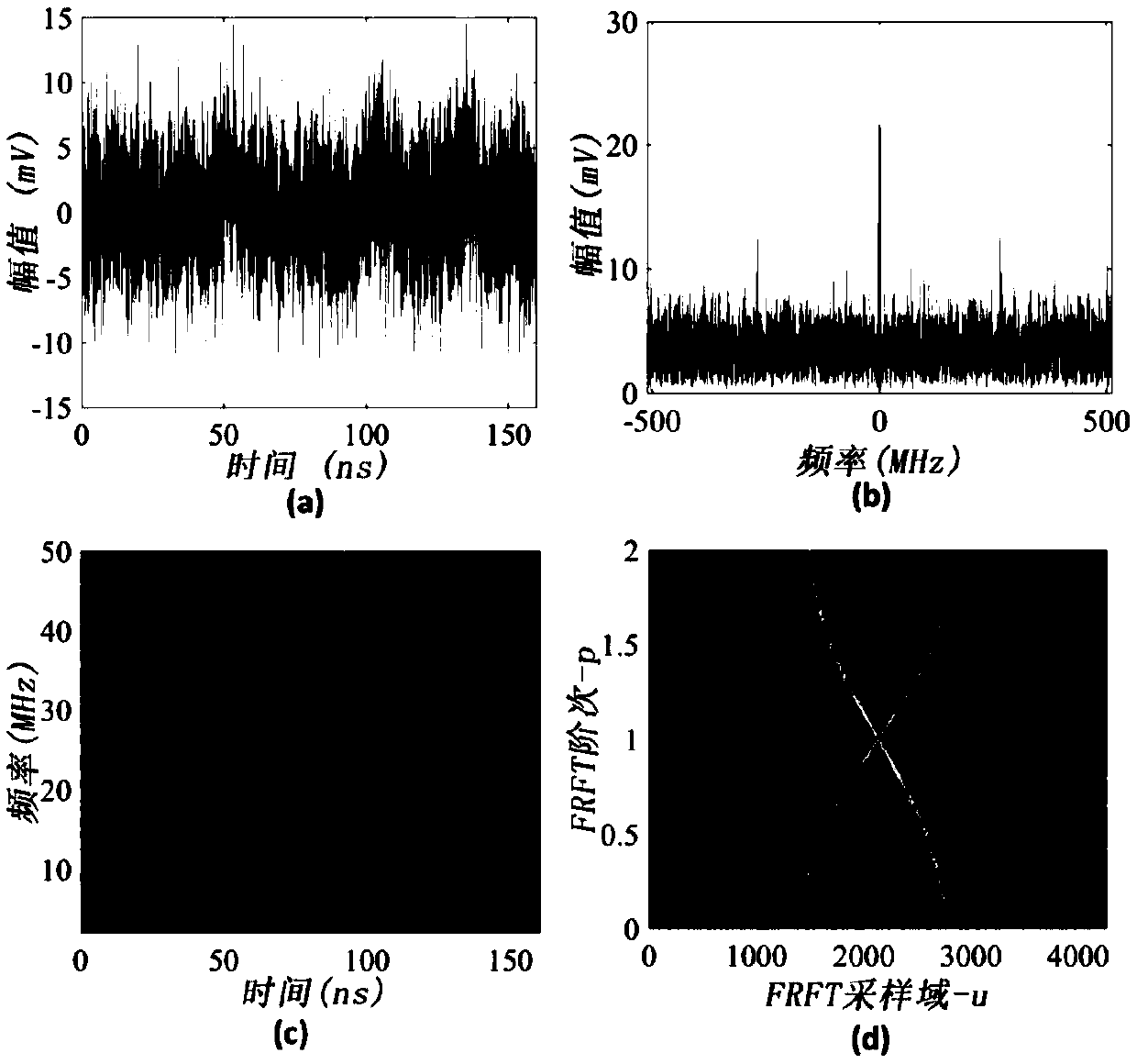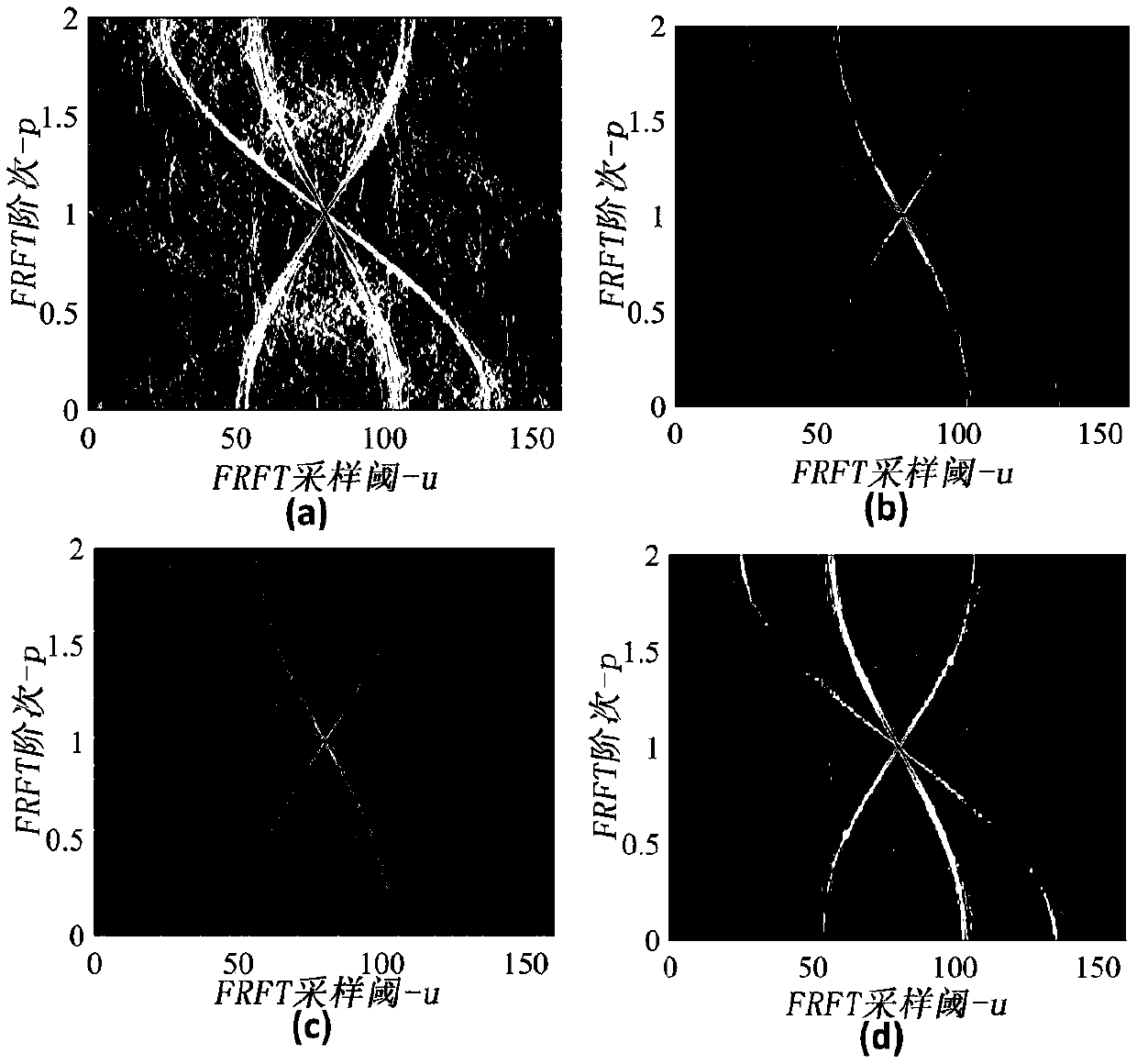Laser radar weak signal extraction and decomposition method based on fractional order Fourier transformation
A technology of fractional Fourier transform and laser radar, which is applied in the direction of radio wave measurement system, instrument, etc., to achieve the effect of strong noise filtering ability and high precision of component extraction
- Summary
- Abstract
- Description
- Claims
- Application Information
AI Technical Summary
Problems solved by technology
Method used
Image
Examples
Embodiment Construction
[0047] The technical solutions of the present invention will be described in detail below in conjunction with the accompanying drawings.
[0048] A method for extracting and decomposing LiDAR weak signals based on fractional Fourier transform, such as figure 1 As shown, the specific steps are as follows.
[0049] Step 1: Fractional Fourier transform (FRFT) is performed on the noisy lidar echo signal to obtain the FRFT spectrum, which is converted from a one-dimensional signal to a two-dimensional image.
[0050] At present, lidar is not limited to single-pulse measurement, and can realize multi-pulse measurement, that is, to completely record the target multi-point echo mixed signal, which is called full-wave signal. Since the laser single pulse is a Gaussian distribution, the full-wave signal y(t) can theoretically be described as the sum of multiple Gaussian pulse signals:
[0051]
[0052] Here K is the number of Gaussian components, a k Represents the magnitude of th...
PUM
 Login to View More
Login to View More Abstract
Description
Claims
Application Information
 Login to View More
Login to View More - Generate Ideas
- Intellectual Property
- Life Sciences
- Materials
- Tech Scout
- Unparalleled Data Quality
- Higher Quality Content
- 60% Fewer Hallucinations
Browse by: Latest US Patents, China's latest patents, Technical Efficacy Thesaurus, Application Domain, Technology Topic, Popular Technical Reports.
© 2025 PatSnap. All rights reserved.Legal|Privacy policy|Modern Slavery Act Transparency Statement|Sitemap|About US| Contact US: help@patsnap.com



